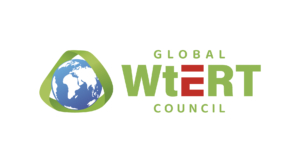M.S. Thesis: Life Cycle Analysis of Processes for Resource Recovery From Waste-to-Energy Bottom Ash
By Yi Xu
Advisor: Profs. A.C. (Thanos) Bourtsalas
Department of Earth and Environmental Engineering
Fu Foundation School of Engineering & Applied Science
Columbia University
May 10, 2017
Combustion with energy recovery of post-recycling municipal solid waste (MSW) plays an important role in sustainable waste management worldwide. The main by-product of MSW combustion is the ash discharged at the end of the moving grate, which has significant resource potential, since it mainly consists of ferrous, non-ferrous metals and mineral aggregates. This potential has led to increasing attention on advanced separation and treatment techniques of waste-to-energy bottom ash (WTE-BA), Life Cycle Analysis (LCA) and Life Cycle Cost Analysis (LCCA) are carried out in this research, to identify the burdens and environmental benefits from WTE-BA processing and recovery methods, and the related expenditures and revenue to WTE facility. Four scenarios are selected with the data corresponding to four WTEBA treatment facilities in the United States and Europe:
- Wet ash discharge with dry treatment system (U.S.A.)
- Wet ash discharge and wet treatment system (Denmark)
- Wet ash discharge followed by dry treatment system with ballistic system (Netherlands)
- Dry ash discharge followed by dry treatment (no ballistic system) (Switzerland)
The results showed that:
- the dry ash, dry processing system is the most cost-effective system, with the highest metal recovery rate and raw material resource saving;
- the Advanced Dry Treatment (ADR) system effectively recovers non-ferrous metal, as compared to conventional dry treatment and wet treatment;
- civil engineering applications of aggregate minerals derived from WTE-BA, after metal separation, reduce the environmental impacts and cost of landfilling ash, and can result in significant additional profit to WTE operations.
